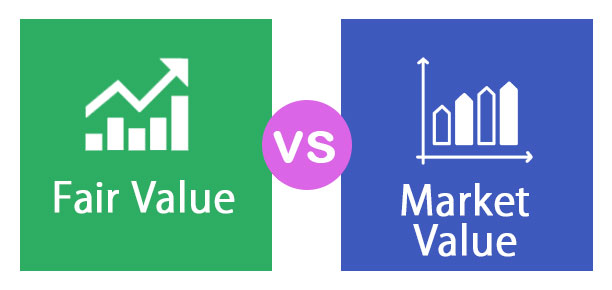
Millions of traders trade in stocks, but sadly, most do not invest their time in understanding the trade. But if you consider it a long-term investment platform, you must thoroughly understand the key aspects of stock trading. Getting aware of the key components of stock trading can not only make you confident enough as a trader, but it will also serve to open up your ideas on stock trading.
The valuation of stocks is one of the important things associated with stock markets. This article discusses two concepts, the Fair Value and Market Value of stocks, and also discusses the common difference between them. This can help the investors become more aware of the investment in stocks.
Key Difference Between The Fair Value And Market Value Of Stocks
In this section, we will understand the key difference between the fair value and the market value of the stocks.
1. Definition
First, we discuss the concepts in the simplest of terms. Fair value is the value of the stock of assets that changes hands between two parties. It is a subjective term used for calculating the value using the current financial statement, the position of the market, and the possible growth value.
The market value, on the other hand, is defined mainly as the value of the market. The market value of an asset is the asset value that the market sets before the stakeholders. They are calculated based on the currency market prices.
This is a basic idea of the two concepts. If you know things in detail, you can take the help of resources provided by quality brokerage services like RoboMarkets. Click on the link, online trading Sweden to understand things in detail.
2. Key Usages
There is a difference between the fair value and the market value of stocks. Fair value is commonly used in the stock markets. The valuation of stock in terms of an appropriate value is basically an accuracy in the valuation of an asset. The fair value will reflect a true measure of the method.
On the other hand, the market value is not used as the common valuation method. Most companies use the market valuation method due to the limitation and shortcomings in deriving actual value.
3. Price Consistency
Another key difference between the fair value and the market value of the assets is the consistency in the price. The fair value of the assets mostly remains constant. They will not fluctuate much when an investor compares the two market values. This denotes one value that can be easily used in a calculation.
On the other hand, the market value of the socks can be determined by the demand and the supply. They are determined by the forces acting in the markets. They tend to fluctuate. The market value of the stocks fluctuates with time.
4. Global Acceptance
The fair value accounting method of the stocks can be measured globally, and the International Financial Reporting Standards accept them. This value of computation of stock value is also accepted in the Generally Accepted Accounting Principles (GAAP).
The market valuation methods of the stocks are something that is not used sparingly. Due to the change in value constantly, they are not accepted globally.
Both concepts are different in terms of their basic idea and areas of implication. Therefore the stakeholders directly and indirectly involved with stock trading need to use the best practices so that things do not really get out of there.
Putting The Discussion To A Close
Whether investing in digital currency trading or stocks or assets, an investor must understand the valuation. A valuation firm tries to value assets by applying various methods.
It is a fact that determining the value of assets is one of the most different aspects of trading. Therefore the industries are following the best practices so that they can value the stocks with professional intent. Investing blindly is one of the biggest risks. Therefore, gaining awareness of the subjects directly and indirectly related to trading is always smart. We hope that the article will help the investors understand things in detail.







